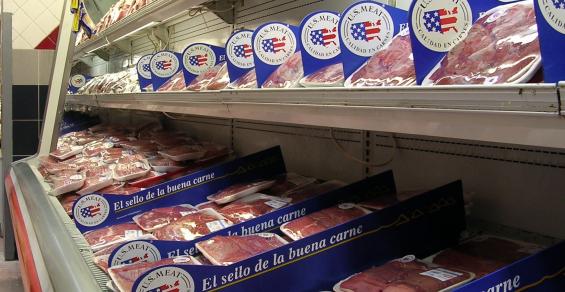One of the many jobs that helped pay for my college diploma was as a truck driver for a wholesale produce company. It didn’t take this rookie gear grinder long to learn that customers and the boss didn’t take it lightly if I was late with a delivery or brought the wrong stuff. It was an early and hard-won lesson that it’s not a good business model to make your customers mad.
I try to avoid clichés in articles for BEEF readers, but in this case it’s hard not to. Unless you’ve been hiding under a rock (which at times seems like a viable alternative), you know that NAFTA is a high profile and controversial trade agreement.
President Trump wants to change and improve it, and has hinted that agriculture will be OK in whatever comes out of the negotiations. Canada and Mexico are, at least publicly, posturing on a hard line about the issue. The negotiations have been long and drawn out, and news coming from the talks has been scarce. So, at this point, all we can do is wait and watch and trust that reasonable and level heads will prevail.
Why does that matter? Because, in BEEF’s opinion, NAFTA has been good for the beef business.
READ: McKinney throws down Canadian trade gauntlet U.S. Meat Export Federation (USMEF), January through November beef export volume totaled 1.15 million metric tons (mt), up 7% from 2016, while export value climbed to $6.6 billion, up 15% from a year ago and slightly above the record pace set in 2014.
We don’t have December data yet, but according to the U.S. Meat Export Federation (USMEF), January through November beef export volume totaled 1.15 million metric tons (mt), up 7% from 2016, while export value climbed to $6.6 billion, up 15% from a year ago and slightly above the record pace set in 2014.
For January through November, beef exports accounted for 12.8% of total production. That’s down from 13.5% in 2016. For beef muscle cuts, exports accounted for 10.3% of U.S. production, steady with 2016.
Indeed, for the past several years, beef exports have played a significant role in the market prices we’ve enjoyed for fed cattle, feeder cattle and calves. How much do exports influence the price you get for your calves? I don’t know. But USMEF says for January through November, beef export value averaged $282.34 per head for fed cattle, up 9% from last year. And when cattle feeders do well, they become more competitive bidders for feeder cattle.
Breaking down those totals, it’s clear that Asia is the leading market for U.S. beef. Our top export market is Japan, where the 11-month totals are 285,336 mt, up 20% from last year, valued at $1.75 billion, up 27% and a new post-BSE record.
But Canada and Mexico are major customers of U.S. beef as well. Through November, exports to Mexico were steady with the first 11 months of 2016 in both volume, at 216,765 mt, and value, at $894.1 million. In fact, Mexico is the second-largest volume market for U.S. beef, behind Japan, and the third-largest in value, behind South Korea. Canada ranks fourth.
And that, to use another cliché, ain’t chicken feed.
Can NAFTA be improved to make it more beneficial for the U.S., as Trump says? Probably. But looking at it through the lens of the beef business, it appears that NAFTA is doing, and has done, good things for beef producers. And, as anyone with customer satisfaction experience will tell you, it’s not a good business model to make your best customers mad.
Further, the outlook for 2018 beef production is higher. For evidence, look no further than the last three Cattle on Feed reports. October—10.8 million cattle on feed, up 5% from the year prior; 2.15 million placed in September, up 13% from a year ago. November—11.3 million cattle on feed, up 6%; 2.39 million placed in October, up 10%. December—11.5 million on feed, up 8%; 2.1 million placed in November, up 14%. Those cattle will come to town in the first quarter of 2018.
What’s more, we’re still in herd building mode, and we’ll have more beef to peddle in 2018 than we had last year. Just like last year, exports will be important in helping maintain an undertow in the cattle market.
That’s why we need NAFTA.




Leave A Comment